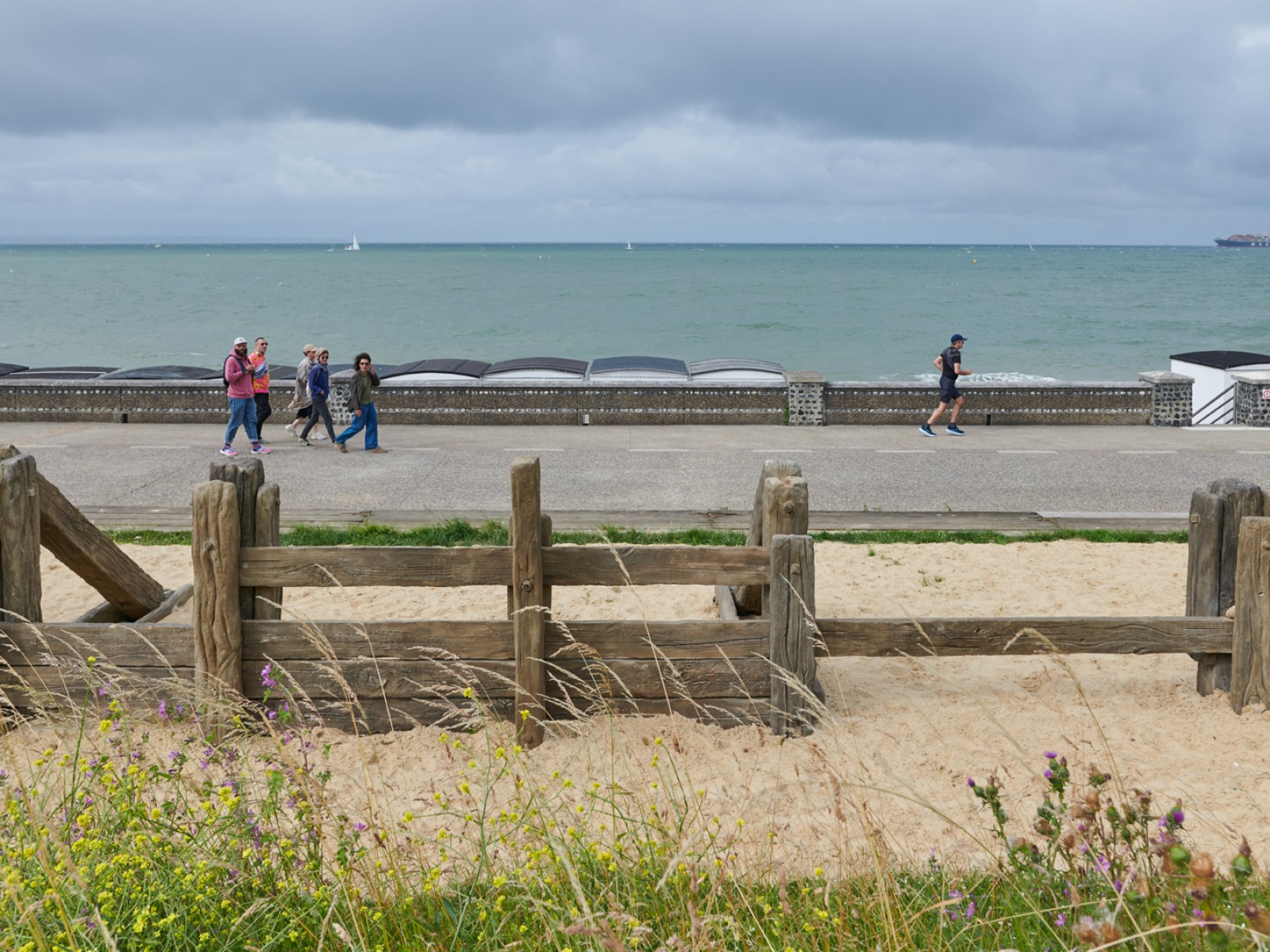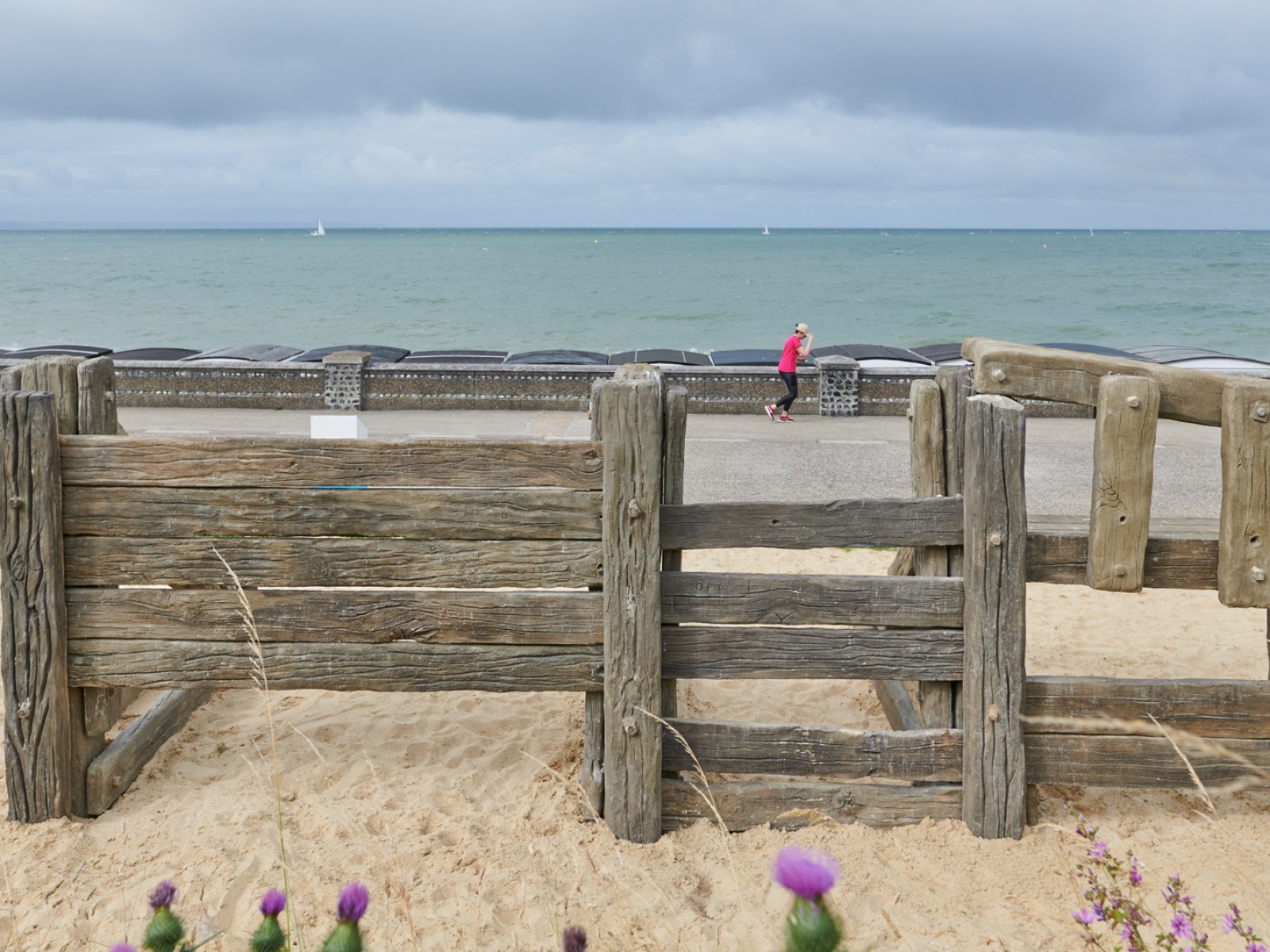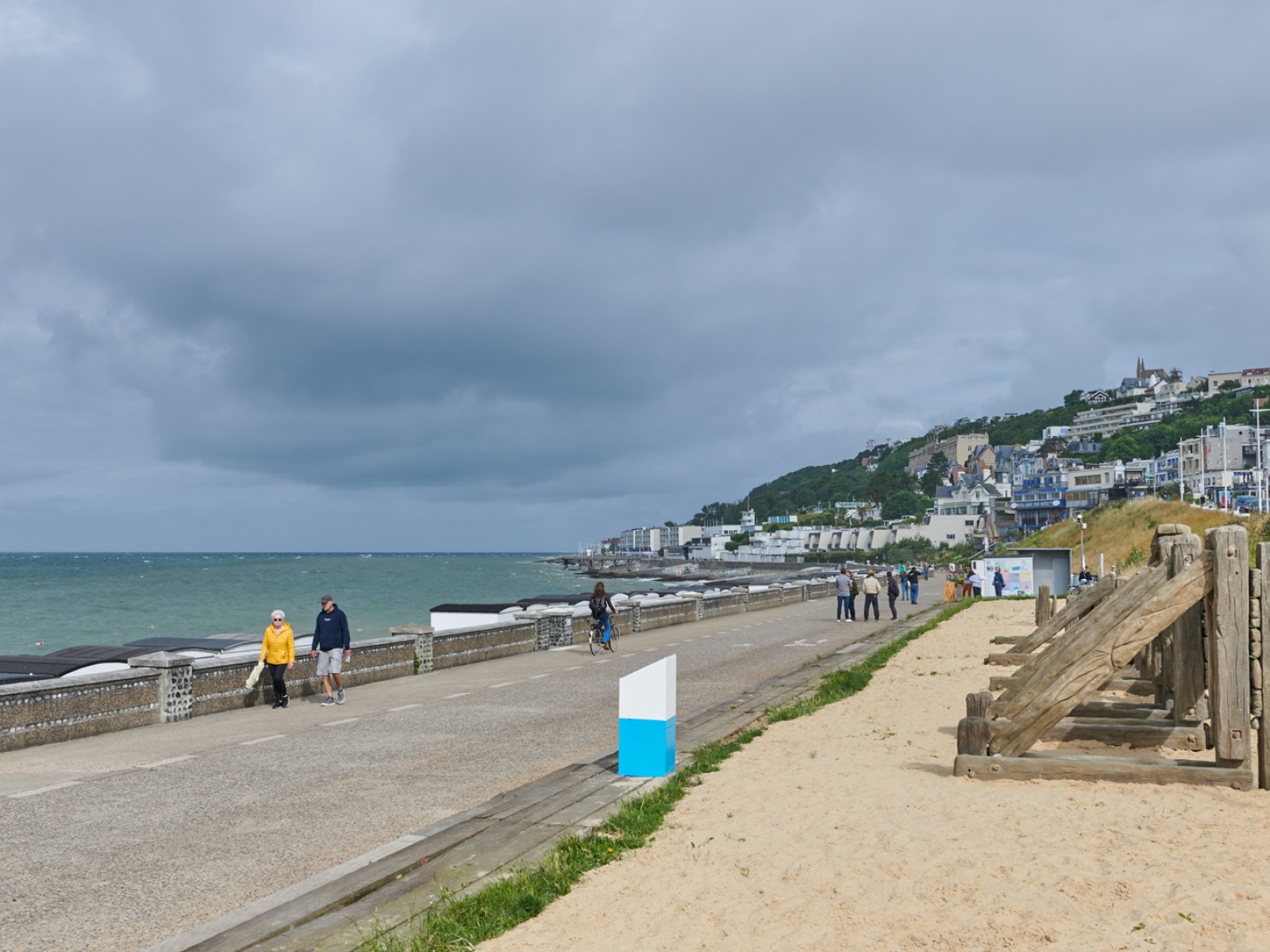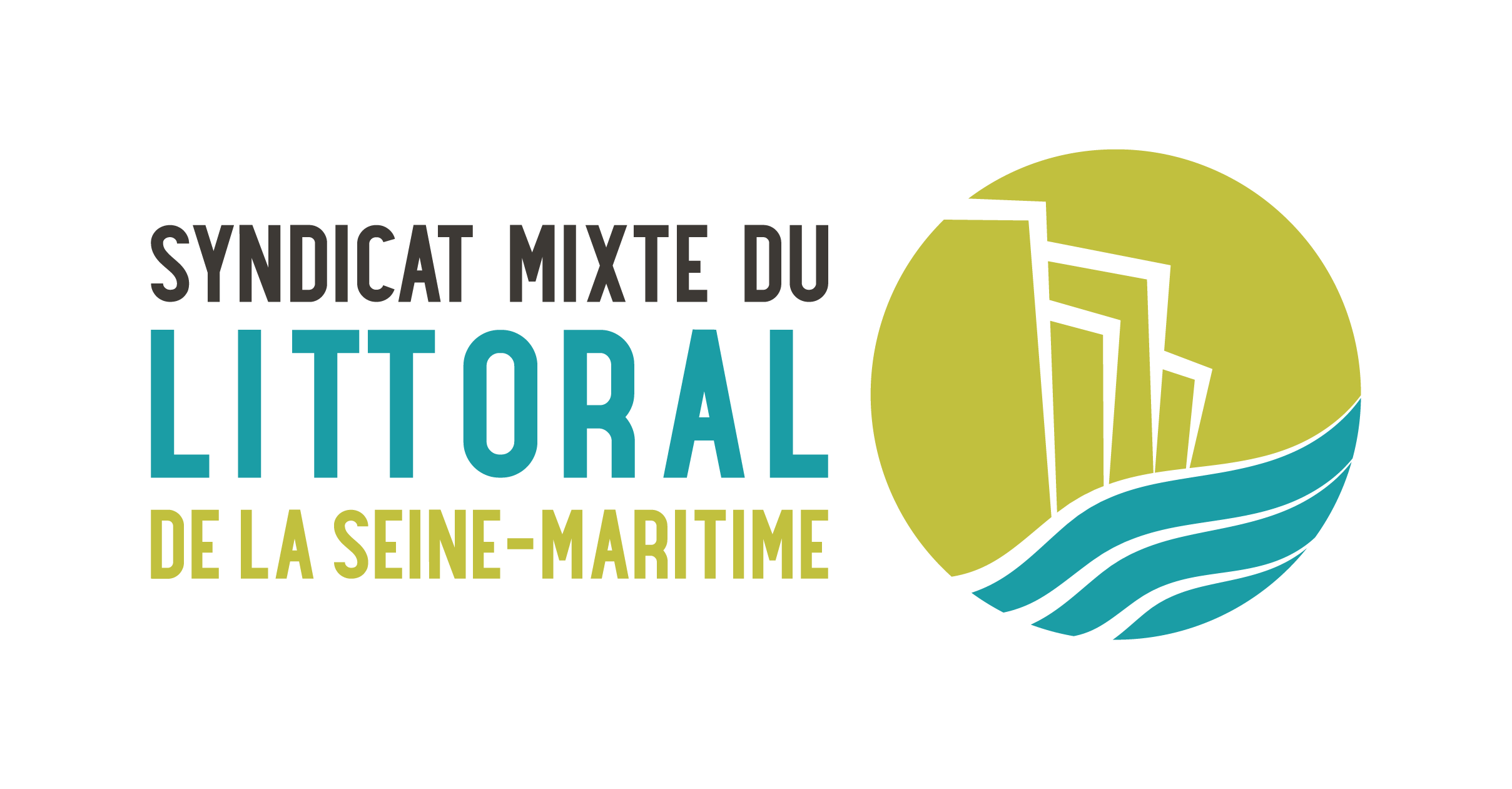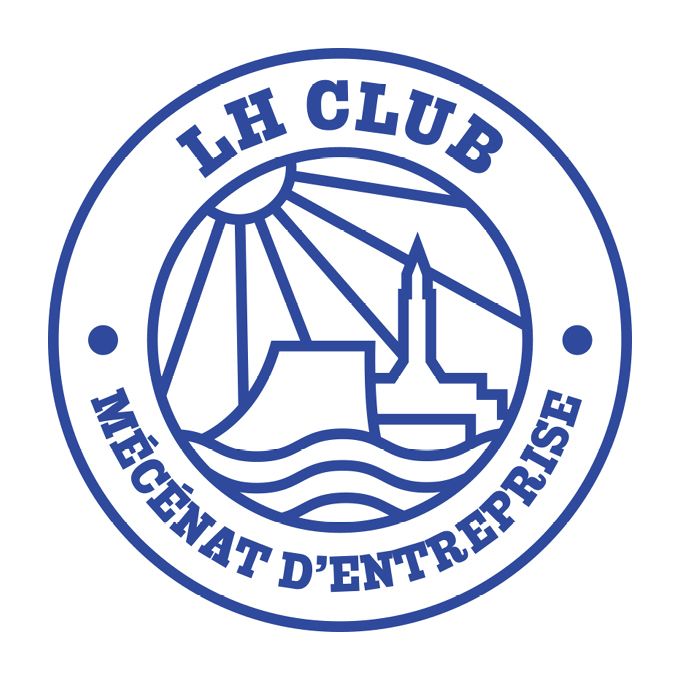EPI
Stéphane Vigny
Regatta ride
Stéphane Vigny reproduced the groyne in its state of use, just before it was removed and at actual size
Plage du Havre, created in partnership with Groupe Partouche Casino du Havre and the Syndicat Mixte du Littoral – permanent work
In February 2024, the last wooden groyne on Le Havre beach was dismantled. Using a cement modelling technique inherited from 19th-century gardeners to imitate nature (known as rusticage or rocaillage), Stéphane Vigny reproduced the groyne in its state of use, just before it was removed and at actual size (almost 30 metres long!), installing it as an extension of the beach promenade. L’Epi by Stéphane Vigny thus functions as a witness sculpture, an object that is both out of place (the original was a few dozen metres away) and symbolic, since it was made using a technique that was a precursor to reinforced concrete, so familiar in Le Havre. This time, however, the groyne is no longer subject to the incessant pounding of the pebbles it was supposed to contain: it now stands as a relic of the constant battle humans have waged against nature to maintain the coastline. Without these structures, built since the Middle Ages - first in wood, then in concrete – as can be seen between the beach and Sainte-Adresse – the sea, the wind and the pebbles would already have largely hollowed out the cliff and the town. L'Epi by Stéphane Vigny is a contemporary version of the myth of Sisyphus, condemned to endlessly push a rock up a mountain, even as it constantly rolls back.
Since 2017, the Grand Casino du Havre - Groupe Partouche has supported a work as part of its contribution to the cultural influence of the city of Le Havre. For the 2024 season of Un Été Au Havre, Linda Morren, Groupe Partouche’s artistic director, selected the work Épi by artist Stéphane Vigny.
As part of its remit, the Syndicat Mixte du Littoral 76 manages the groynes and sea defences between Le Havre and Le Tréport, including groyne No. 8, and also organises public awareness campaigns on rising sea levels and the risk of flooding in coastal towns. This work will not only explain the role of the structures along the coast, but also raise awareness of the effects of climate change on the coastal strip.
